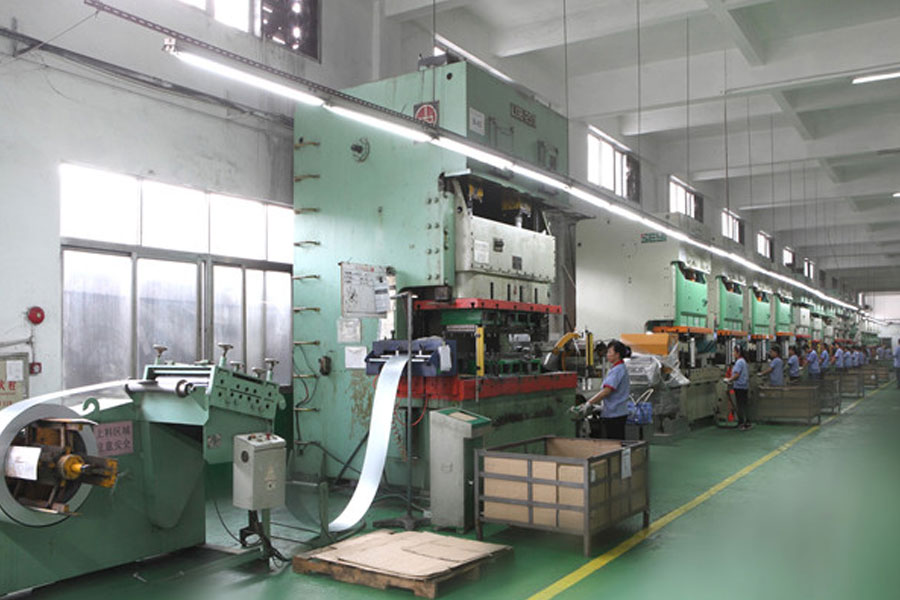1. The number of steps should be determined reasonably: the number of steps in the continuous die is equal to the sum of the decomposed single steps, such as the number of steps in the punching-blanking continuous die, which is usually equal to the two single steps of punching and blanking. with.
2. When arranging the punching and blanking process sequence, the punching process should be put in front, so that not only the direct feeding of the tape can be ensured, but also the punched holes can be used as guide positioning holes to improve The accuracy of the workpiece.
3. In the workpiece without circular holes, in order to improve the accuracy of the feeding step, a process hole can be designed in the step sequence of the die, so that the process hole can be used as a guide and positioning to improve the accuracy of the punching part.
4. Different holes with higher accuracy requirements of the same size standard should be formed in the same step without affecting the strength of the die.
5. Steps with higher dimensional accuracy requirements should be arranged in the latter step as far as possible, while steps with less precision requirements should be arranged in the previous step. This is because the higher the step, the accumulated error Bigger.
6. In a multi-step continuous mold, the order of punching, cutting, grooving, bending, forming, cutting and other steps should generally be arranged in front of the separation process such as punching, notching, and grooving.
7. When punching holes of different shapes and sizes, try not to put the large holes and small holes on the same step at the same time, so that the accuracy of the hole distance can be ensured when the mold is repaired.
8. When designing, if the forming and punching are completed on the same die, the forming punch and the punching punch should be fixed separately, and the surfaces should not be fixed on the same fixed plate.
9. When designing, make sure that the formed parts of each process step are not damaged, so that the strip material is kept on the same feeding line.
10. For molds with a large number of process steps and many bending steps, the cutting edge of the die should adopt a block-in structure as much as possible, which can realize rapid replacement and grinding.
11. Regarding the fixing method of the punch, when the continuous stamping is realized, the fixing method of the hanging table and the counter pressure block should be adopted to ensure that the punch will not fall and damage the mold during the continuous stamping.
12. When the strength and location of the mold structure allow. Multi-step molds should use floating guide pins as much as possible.
13. The interface form of trimming. In continuous molds, people with inexperience often make the interface clear angles. I recommend semicircular cuts.
Continuous mold manufacturing needs attention

Leave a Reply